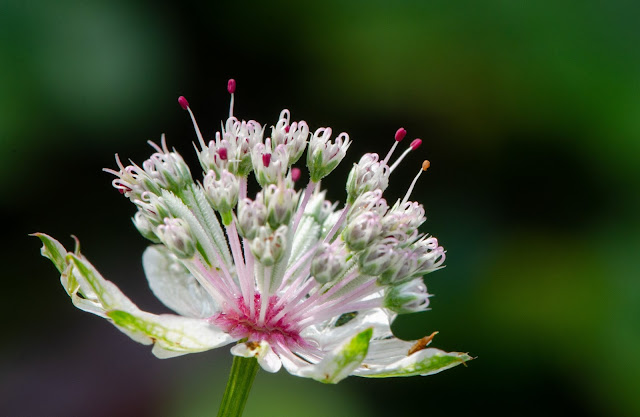There are some fabulous dark foliage plants to choose from but if overused, the garden can look a little sombre. When working on a planting design, I aim to have a "triangle" of dark accents, ie just 3 areas, one in each border in a small garden, adding a little punctuation of dark colour amongst the many greens. A few more in a larger planting scheme. They look particularly good if used next to orange, pink or cream flowers.
My regular choices will be from the following and will depend on the size of garden.
Shrubs for dark accents
Cotinus Coggria "Royal Purple" or "Grace", the Smoke Bush. But these need plenty of space. They want to be 2.5 metres tall AND wide.
 |
Cotinus Royal Purple (Internet Photo)
|
A much better choice for limited space is Physocarpus Diablo. It keeps a nice upright shape and easily pruned to keep to the desired size in any garden.
 |
Physocarpus Diablo. (Internet Photo)
|
Another lovely choice would be an Acer. Some though get too big, so do read the label to see the ultimate height when choosing. One I often see
badly used in gardens is Acer Bloodgood. Lovely foliage, but after a few years too big for a small garden, making the garden feel very dark.
 |
Acer Bloodgood (internet photo)
|
In my own garden, I do have a Cotinus, and also an Acer, but my Acer is the weeping variety, grafted on to a rootstock which will never grow more than about 1.5mtrs. Here is mine.
 |
| My own Acer Palmatum Dissectum Garnet with Cream heads of Hydrangrea Annabelle beyond |
 |
| The same Acer, and on the opposite side Orange Heleniums |
Perennials for dark accents
A word of warning - avoid Lysimachia Firecracker! It has beautiful foliage, but underground roots spread everywhere. Do NOT be tempted to use this..... ever.
A few of my regular favourites are Heuchera Obsidan, Eupatorium Chocolate (recently renamed as Ageratoma altissima Chocolate), Actea Brunette (for shade) and Sedum Purple Emperor. Also, one I discovered this year as I mentioned in an earlier block is Penstemon Husker's Red (below)
 |
| Penstemon Huskers Read for early dark foliage. |
Actea in its dark form (there are green ones) is a fabulous plant. Really interesting foliage for months, then, when most other plants have stopped flowering, it starts around early September and has wonderful perfume too. I have one at home just near the front door.
 |
Actea Brunette. Gorgeous scent late season. (internet photo)
|
 |
Heuchera Obsidan in my own garden.
Underplanting with Pink Lythrum ( Loosestrife) just starting its second flowering after being cut back |
 |
| My own garden with Eupatorum Chocolate behind Helenium and Orange Achillea |
 |
| My own garden with Eupatorium Chocolate behind Echinacea Magus |
 |
My own front garden with dark accents from Sedum Purple Emperor below Orange Rose Pat Austin.
(A fabulous repeat flowering Rose. I have deadheaded dozens of flowers already!)
|


















































